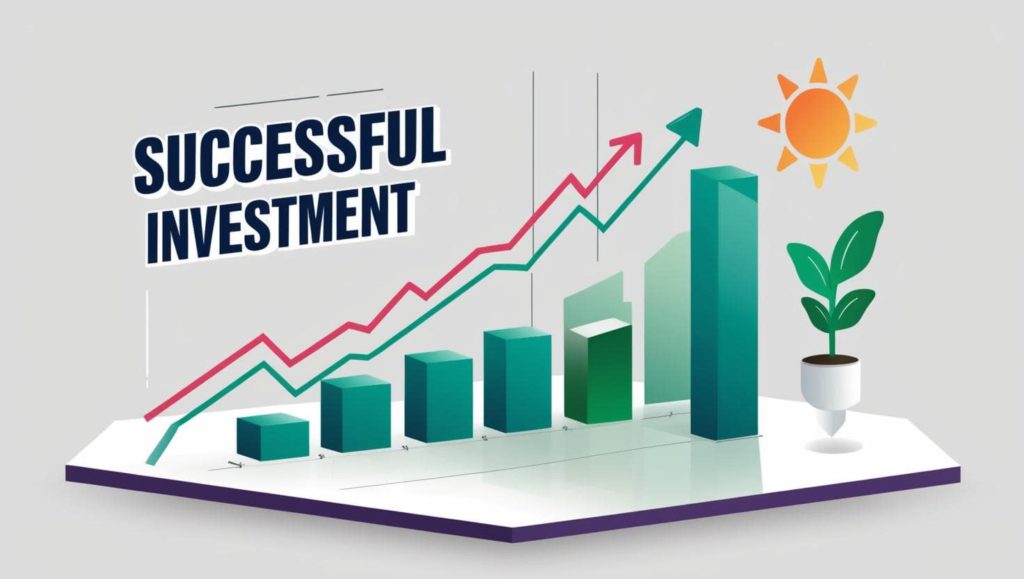In the world of business and finance, one of the most important metrics used to evaluate the success of an investment is ROI, or Return on Investment.

Whether you’re running a business, managing personal finances, or evaluating a marketing campaign, ROI provides valuable insight into the profitability and effectiveness of your investment decisions. But what exactly is ROI, and how do you calculate and use it effectively? In this article, we’ll explore what ROI is, how to calculate it, and how you can use it to make better financial decisions.
What is ROI?
ROI (Return on Investment) is a financial metric used to measure the profitability or efficiency of an investment. It compares the return (or benefit) of an investment relative to its cost. Simply put, ROI answers the question: “How much profit did I make from this investment, compared to what I spent?”
ROI is often expressed as a percentage, allowing businesses and individuals to gauge how well their investments are performing. A positive ROI means the investment is yielding profits, while a negative ROI indicates a loss.
The ROI formula
The formula for calculating ROI is fairly simple: ROI=(Net ProfitCost of Investment)×100\text{ROI} = \left( \frac{\text{Net Profit}}{\text{Cost of Investment}} \right) \times 100
Where:
- Net profit is the total gain or loss from the investment (after subtracting the original cost).
- Cost of investment is the initial amount spent on the investment.
Example of ROI calculation:
Imagine you invested $1,000 in a marketing campaign for your business, and the campaign generated $2,000 in revenue. The net profit would be $2,000 (revenue) – $1,000 (investment), which equals $1,000.
Using the ROI formula: ROI=(1,0001,000)×100=100%\text{ROI} = \left( \frac{1,000}{1,000} \right) \times 100 = 100\%
In this example, your ROI is 100%, meaning you made back your investment plus an additional 100% profit.
Why is ROI important?
ROI is crucial for several reasons, whether you’re a business owner, investor, or marketer:
1. Measuring success and efficiency
ROI helps businesses assess the effectiveness of investments, such as marketing campaigns, new projects, or product launches. By calculating ROI, you can quickly determine which investments are delivering the best returns and which may need improvement or reconsideration.
2. Informed decision-making
Understanding ROI enables businesses and individuals to make more informed financial decisions. It allows you to compare different investment opportunities and select the ones with the highest potential for profit. This helps optimise resources and avoid wasteful spending.
3. Tracking performance over time
ROI can also be used to track the performance of investments over time. By regularly calculating ROI, you can assess whether your strategy is improving or if adjustments need to be made to achieve better results.
4. Setting financial goals
For businesses, ROI can be used to set financial goals and benchmarks. By understanding how much return is expected from certain investments, businesses can plan their budgets and allocate resources more effectively.
How to Use ROI in different contexts
1. Marketing ROI
For businesses, one of the most common uses of ROI is measuring the success of marketing campaigns. To calculate marketing ROI, you compare the revenue generated by the campaign with the costs of running the campaign (advertising spend, labor, etc.).
Example: You spend $500 on a Facebook ad campaign, and it generates $1,500 in sales. The ROI would be: ROI=(1,500−500500)×100=200%\text{ROI} = \left( \frac{1,500 – 500}{500} \right) \times 100 = 200\%
This means that for every dollar spent on the campaign, you made $2 in return.
2. Investment ROI
In personal finance, ROI is often used to measure the performance of investments like stocks, bonds, or real estate. To calculate ROI for an investment, subtract the initial cost from the current value or proceeds from the investment, and divide by the original cost.
Example: You buy stock for $2,000, and after a year, it’s worth $2,400. The ROI would be: ROI=(2,400−2,0002,000)×100=20%\text{ROI} = \left( \frac{2,400 – 2,000}{2,000} \right) \times 100 = 20\%
This means you earned a 20% return on your investment over the year.
3. Business ROI
For businesses, ROI can be used to evaluate the overall performance of a project, such as the development of a new product or service. By calculating the ROI of a project, businesses can determine whether it was worth the investment and whether future projects will yield similar results.
Limitations of ROI
While ROI is a valuable metric, it’s important to understand its limitations:
- Doesn’t account for time: ROI alone doesn’t account for the time factor. An investment that generates a 50% ROI over 10 years may not be as appealing as one that generates 30% ROI in just one year.
- Doesn’t consider risk: ROI doesn’t factor in the risk associated with an investment. Higher returns often come with higher risks, which ROI doesn’t reflect.
- Doesn’t include opportunity cost: ROI doesn’t consider the potential gains you could have earned from alternative investments. This is where more advanced financial metrics, such as net present value (NPV) or internal rate of return (IRR), might come in handy.
Tips for using ROI effectively
- Compare Similar Investments: When using ROI to evaluate different investments, make sure you’re comparing similar options. For instance, compare marketing campaigns with similar budgets and objectives or real estate investments in the same location.
- Consider the Time Frame: Always consider the time frame over which ROI is measured. A 100% ROI in one month is much more attractive than 100% ROI over five years.
- Use ROI with Other Metrics: Don’t rely solely on ROI. Use it alongside other financial metrics, such as cash flow, NPV, and risk assessments, to get a fuller picture of an investment’s potential.
ROI is a powerful and simple tool for evaluating the profitability of an investment. By calculating ROI, you can assess the success of your financial decisions, whether you’re managing a business, running marketing campaigns, or investing in stocks.
However, it’s essential to consider ROI alongside other factors, such as time, risk, and opportunity cost, to make the most informed decisions possible. By doing so, you’ll be better equipped to make smart investments that maximise returns.



